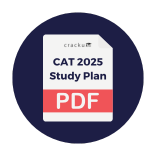The passage given below is followed by a set of three questions. Choose the most appropriate answer to each question.
To discover the relation between rules, paradigms, and normal science, consider first how the historian isolates the particular loci of commitment that have been described as accepted rules. Close historical investigation of a given specialty at a given time discloses a set of recurrent and quasi-standard illustrations of various theories in their conceptual, observational, and instrumental applications. These are the community's paradigms, revealed in its textbooks, lectures, and laboratory exercises. By studying them and by practicing with them, the members of the corresponding community learn their trade. The historian, of course, will discover in addition a penumbral area occupied by achievements whose status is still in doubt, but the core of solved problems and techniques will usually be clear. Despite occasional ambiguities, the paradigms of a mature scientific community can be determined with relative ease.
That demands a second step and one of a somewhat different kind. When undertaking it, the historian must compare the community's paradigms with each other and with its current research reports. In doing so, his object is to discover what isolable elements, explicit or implicit, the members of that community may have abstracted from their more global paradigms and deploy it as rules in their research. Anyone who has attempted to describe or analyze the evolution of a particular scientific tradition will necessarily have sought accepted principles and rules of this sort. Almost certainly, he will have met with at least partial success. But, if his1 9 experience has been at all like my own, he will have found the search for rules both more difficult and less satisfying than the search for paradigms. Some of the generalizations he employs to describe the community's shared beliefs will present more problems. Others, however, will seem a shade too strong. Phrased in just that way, or in any other way he can imagine, they would almost certainly have been rejected by some members of the group he studies. Nevertheless, if the coherence of the research tradition is to be understood in terms of rules, some specification of common ground in the corresponding area is needed. As a result, the search for a body of rules competent to constitute a given normal research tradition becomes a source of continual and deep frustration.
Recognizing that frustration, however, makes it possible to diagnose its source. Scientists can agree that a Newton, Lavoisier, Maxwell, or Einstein has produced an apparently permanent solution to a group of outstanding problems and still disagree, sometimes without being aware of it, about the particular abstract characteristics that make those solutions permanent. They can, that is, agree in their identification of a paradigm without agreeing on, or even attempting to produce, a full interpretation or rationalization of it. Lack of a standard interpretation or of an agreed reduction to rules will not prevent a paradigm from guiding research. Normal science can be determined in part by the direct inspection of paradigms, a process that is often aided by but does not depend upon the formulation of rules and assumption. Indeed, the existence of a paradigm need not even imply that any full set of rules exists.
Throughout the passage, the author highlights that "the paradigms" are "the general rules of science".
Rules are difficult to be defined. On the other hand, paradigms can follow without any rules. Option e) accurately represents the idea.
Create a FREE account and get:
- All Quant CAT complete Formulas and shortcuts PDF
- 38+ CAT previous year papers with video solutions PDF
- 5000+ Topic-wise Previous year CAT Solved Questions for Free




